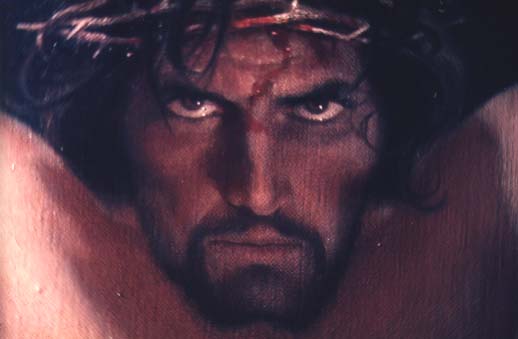

David
Gigantic marble, started in 1501 and completed in 1504
...............................................................................
click here for more on Michelangelo
Tomba di Lorenzo de'Medici, 1515
circa, particolare.
Description: Marble, detail of Lorenzo De' Medici's tomb, about 1525 Casa
Buonarroti
The Sistine Chapel
All the same, it is the Sistine ceiling that displays Michelangelo
at the full stretch of his majesty. Recent cleaning and restoration have exposed
this astonishing work in the original vigour of its color. The sublime forms,
surging with desperate energy, tremendous with vitality, have always been
recognized as uniquely grand. Now these splendid shapes are seen to be intensely
alive in their colour, indeed shockingly so for those who liked them in their
previous dim grandeur.
The story of the Creation that the ceiling spells out is far from simple, partly because Michelangelo was an exceedingly complicated man, partly because he dwells here on profundities of theology that most people need to have spelt out for them, and partly because he has balanced his biblical themes and events with giant ignudi, naked youths of superhuman grace. They express a truth with surpassing strength, yet we do not clearly see what this truth actually is. The meaning of the ignudi is a personal one: it cannot be verbalized or indeed theologized, but it is experienced with the utmost force.
Michelangelo painted the ceiling of the Sistine Chapel from 1508 to
1512, commissioned by Pope Julius II. On becoming pope in 1503, Julius II
reasserted papal authority over the Roman barons and successfully backed the
restauration of the Medici in Florence. He was a liberal patron of the arts,
commissioning Bramante to build St Peter's Church, Michelangelo to paint the
Sistine Chapel, and Raphael to decorate the Vatican apartments.
There is the same power, though in more comprehensible form, in the great
prophets and seers that sit in solemn niches below the naked athletes. Sibyls
were the oracles of Greece and Rome. One of the most famous was the Sibyl
of Cumae, who, in the Aeneid, gives guidance to Aeneas on his journey to the
underworld. Michelangelo was a heavyweight intellectual and poet, a profoundly
educated man and a man of utmost faith; his vision of God was of a deity all
``fire and ice'', terrible, august in His severe purity. The prophets and
the seers who are called by divine vocation to look upon the hidden countenance
of God have an appropriate largeness of spirit. They are all persons without
chitchat in them.
Michelangelo Ceiling of the Sistine Chapel in Vatican City
Sibyls were female seers of ancient Greece and Rome. They were also known
as oracles. Like the Jewish prophets of the Old Testament, many sibyls had
their sayings recorded in books. Jewish prophets spoke unbidden, whereas sibyls
tended to speak only if consulted on specific questions. They sometimes answered
in riddles or rhetorical questions.
The Erythraean Sibyl leans forward, lost in her book. The artist makes no
attempt to show any of the sibyls in appropriate historical garb, or to recall
the legends told of them by the classical authors. His interest lies in their
symbolic value for humanity, proof that they have always been the spiritual
enlightened ones, removed from the sad confusion of blind time.
The fact that the sibyls originated in a myth, and one dead to his heart (which longed for Christian orthodoxy) only heightens the drama. At some level we all resent the vulnerability of our condition, and if only in image, not reality, we take deep comfort in these godlike human figures. Some of the sibylline seers are shown as aged, bent, alarmed by their prophetic insight.
The implicit sense of God's majesty (rather than His fatherhood) is made explicit in the most alarming Last Judgement known to us. Is is Michelangelo's final condemnation of a world he saw as irredeemably corrupt, a verdict essentially heretical, though at that time is was thought profoundly orthodox. His judging Christ is a great, vengeful Apollo, and the power in this terrible painting comes from the artist's tragic despairs. He paints himself into the judgement, not as an integral person, but as a flayed skin, an empty envelope of dead surface, drained of his personhood by artistic pressure. The only consolation, when even the Virgin shrinks from this thunderous colossus, is that the skin belongs to St Bartholomew, and through this martyr's promise of salvation we understand that perhaps, though flayed alive, the artist is miraculously saved.
As grandly impassive as the Erythraean Sibyl is the heroic Adam in The Creation of Adam, lifting his languid hand to his Creator, indifferent to the coming agonies of being alive.
Thanks to our sponsors
Art web site art market
GeigaMedia Website Development
London Airport uk-taxi
Jewellers since 1790
Jewellery
website
Cocot Lingerie
exceldocklands
Omega watches
Berkeleys